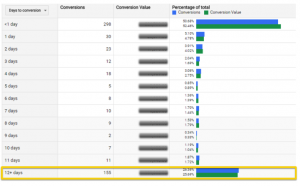
Identify What Could Be Impacting your CRO
CRO is about coming up with an effective strategy to have a positive impact on your conversion numbers. It is based on diagnosis, theory and testing. Read about the basics of CRO in part one – here.
To start with, try to picture your website from the perspective of one of your visitors. What is having a negative impact on conversion numbers from their perspective?
Here are some key areas to look at.
- Call to action – Is your call to action easy to find and easy to understand?
- Images – Do your graphics match what you are trying to say? Is the page cluttered or is there the right amount of text to image ratio?
- Text – Is the accompanying copy clear and concise?
- Usability – Can people on your site clearly find where they are supposed to go and where the information they need is? If you have an e-commerce site, is the checkout process simple? How many pages do visitors have to click through to convert? Is your site readable on all devices?
- Security – Do visitors to your site feel safe and that their details will be kept secure?
- SEO – Have you correctly carried out your SEO on your site, using appropriate keywords, alt-tags, meta tags etc? Are all the visitors coming to your site because they are looking for something that you have?
- Testimonials – Have you used customer reviews and testimonials to show visitors that others are happy with your services? This can be a powerful conversion motivator.
This is just a short list of the things that could be impacting your CRO. Every website is different and you are the best person to understand what it is that your audience is looking for.
When it comes to conversion, you need to consider six elements.
- Value proposition
Make sure you create a value proposition in the mind of the visitor – with the costs and benefits explained in a way that makes them comfortable.
- Relevance
Does your value proposition meet the needs and wants of your site visitors?
- Clarity
Is your message coming across in a way that is easy for visitors to understand?
- Distraction
Is the first thing that a visitor sees on your page helping or hindering your message?
- Anxiety
Is there something on the page that might be making people feel anxious? Or is something missing which may cause a user to feel that they shouldn’t convert?
- Urgency
What have you offered to help a customer choose to make the decision to convert immediately?
Building a CRO Plan
When building a CRO plan for your website, you first need to work out what the metrics you have right now mean. This can help you to come up with a clearly defined plan that allows you to build on a hypothesis based on actual figures. By testing, you can add to the knowledge you have to gain a further theory to build a more effective CRO strategy.
Stage One: Planning
Firstly, you will want to lay out your plan for your CRO strategy. Setting goals will help you to create a framework and establishing what your conversions look like gives you something concrete to work towards.
For example, if you run a photography website, your plan may look like this:
- Your goal is to increase the number of people asking for a free consultation as these often lead to bookings.
- Your theory is that adding testimonials will increase the consultations that you get booked in.
- Your plan is to conduct A/B split testing which has the testimonials on different parts of the page.
- You will measure the impact this has on conversions.
Stage Two: Your Baseline
You need to work out your baseline – the number of conversions that you are currently getting. Work out which metrics you need to measure to get this. You can also run a survey and conduct user testing to see how users feel about whether you are meeting your goals.
You will need to use:
- Analytics – this is software such as Google Analytics which reports on metrics about your site.
- Surveys – These can help you to clearly identify what it is your users are looking for.
- Testing – This can help you to track user behaviour based on your theories.
Stage Three – Your Hypotheses
Once you have looked at your baseline, you can begin to see where your site may be struggling. For example, a high bounce rate on one page could indicate an issue on that page that is putting people off. You can then try adding an on-page survey to get feedback. You could maybe try installing CrazyEgg onto the page to see where people are clicking. Take this information and use it to build a theory up of why people aren’t responding like they should.
Stage Four – Your Tests
Next comes designing your tests. Here are our tips.
- Start small – work out what small change could have a huge impact.
- Start simple – don’t try changing too many things at once.
- Get a second opinion – you may not see the problem where someone else will.
- Lower your risk bar – entice customers with freebies.
- Double check all your results.
- Select a sample size and stick to it – don’t worry too much about gathering more and more data.
Stage Five – Run Tests
Using your original baseline, run the tests and see what the numbers are. If the changes you make have a positive impact, great! You have improved your CRO! If not, don’t be disheartened. Go back to stage four, look at the data again and come up with new tests. A negative result can be as informative as a positive one.
Digital & Social Articles on Business 2 Community(97)






